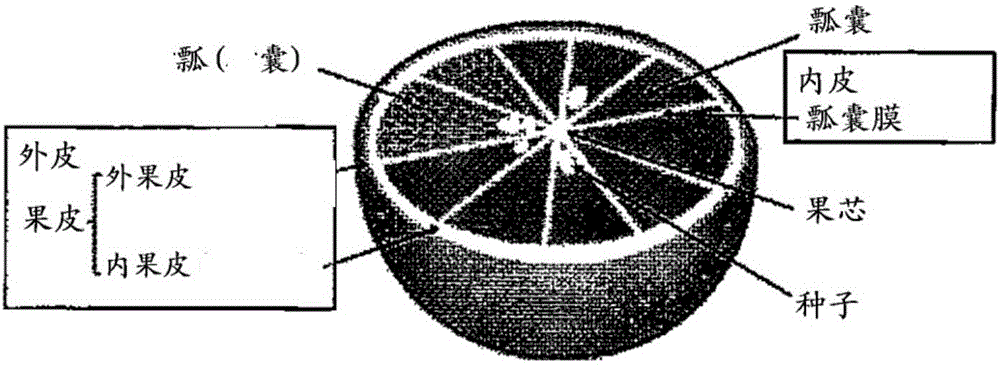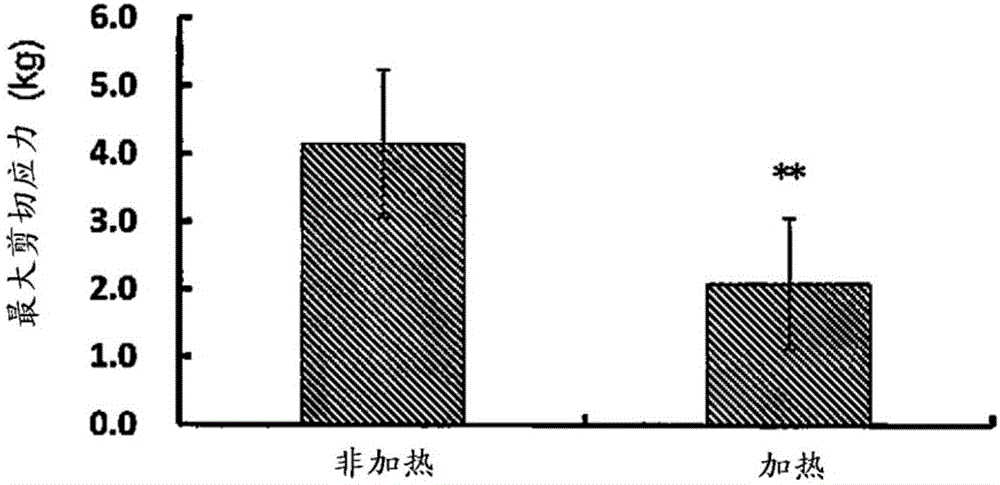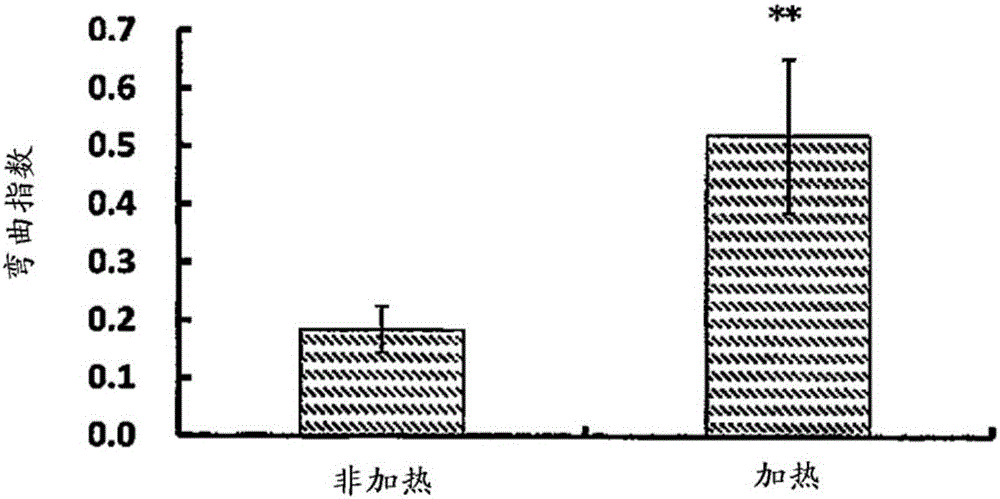Composition for processing citrus fruit pulp and method for producing pulp processed food product using same
A technology of citrus and composition, applied in the field of citrus fruit processing method, can solve the problems of softening, reducing, complicated procedures and the like of pulp
- Summary
- Abstract
- Description
- Claims
- Application Information
AI Technical Summary
Problems solved by technology
Method used
Image
Examples
preparation example 1
[0083] (Preparation example 1) the preparation of the pulp flap with endothelium
[0084] In order to examine the effect of the present invention on preventing softening of the pulp after peeling, a flesh flap with an inner skin from which the outer skin has been removed (distributed pulp flaps broken into flaps) was prepared.
[0085] (a) Sample
[0086] U.S. and South African grapefruit (white-flesh and red-flesh varieties) were used as raw material fruits, and Viscozyme L (Novozymes Japan) was used as an enzyme preparation.
[0087] (b) method
[0088] Grapefruit (hereinafter GF) was perforated using a sharp drill (approximately 50 places on the fruit body). The fruit subjected to the porosity treatment was dipped in a Viscozyme L 0.20% by mass aqueous solution of twice the fruit weight, and the dipping process was performed under reduced pressure at 720 mmHG for 5 minutes. Take out the fruit from the enzyme solution, soak in hot water at 45°C and react for 30 minutes. ...
Embodiment 1
[0089] (Example 1) Study of Enzyme Concentration (Low Temperature and Long Time Treatment Using Endothelial Pulp Flaps)
[0090] (a) Sample
[0091] The flesh flap with endothelium prepared in Preparation Example 1 from GF (white meat variety) produced in South Africa and Viscozyme L (compound plant hydrolase, Novozymes Japan Co.) were used.
[0092] (b) method
[0093] After immersing 300 g of the flesh pieces with inner skin in 300 g of enzyme aqueous solutions adjusted to the respective concentrations shown in Table 1 and reacting at 9° C. for 17 hours, the state of the pulp was observed.
[0094] Table 1 The test area of Example 1
[0095] test area
A
1.00
B
0.80
C
0.40
D
0.30
E
0.20
F
0.15
G
0.10
[0096] (c) Results
[0097] The results are shown in Table 2. Dissolved remnants of endothelium were observed in F and G zones. In plots A to E, all test plots ...
Embodiment 2
[0102] (Example 2) Verification of pulp softening due to heating
[0103] (a) Sample
[0104] GF (white meat variety) from South Africa was used as a raw material fruit, and Viscozyme L (Novozymes Japan Co., Ltd.) was used as an enzyme preparation.
[0105] (b) method
[0106] The pulp in the non-heating zone is obtained by cutting the outer skin of GF with a kitchen knife, peeling off the outer skin by hand, and breaking it into flaps, so as to obtain each pulp flap with inner skin. The inner skin is cut and separated from the pulp with a kitchen knife appropriately to obtain the pulp from which the inner skin has been removed. The pulp in the heating zone is obtained by using the method shown in Preparation Example 1 to obtain each pulp flap with inner skin. 2000 g of the inner skin-attached pulp pieces were immersed in 2000 g of Viscozyme L 0.20% by mass aqueous solution, and reacted at 9° C. for 17 hours to obtain pulp from which the inner skin was removed. The pulp wa...
PUM
 Login to View More
Login to View More Abstract
Description
Claims
Application Information
 Login to View More
Login to View More - R&D
- Intellectual Property
- Life Sciences
- Materials
- Tech Scout
- Unparalleled Data Quality
- Higher Quality Content
- 60% Fewer Hallucinations
Browse by: Latest US Patents, China's latest patents, Technical Efficacy Thesaurus, Application Domain, Technology Topic, Popular Technical Reports.
© 2025 PatSnap. All rights reserved.Legal|Privacy policy|Modern Slavery Act Transparency Statement|Sitemap|About US| Contact US: help@patsnap.com



